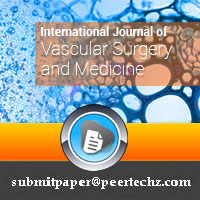International Journal of Vascular Surgery and Medicine
Development of biocompatible natural polymer as promising green emissaries of essential therapeutics-A brief overview
Kunal Pal1,2*
2Division of Molecular Medicine and Centre for Translational Research, Bose Institute, Kolkata-700056, India
Cite this as
Pal K (2020) Development of biocompatible natural polymer as promising green emissaries of essential therapeutics-A brief overview. Int J Vasc Surg Med 6(1): 009-010. DOI: 10.17352/2455-5452.000037Most of the natural polymers are high molecular weight; water soluble polymers made up of monosaccharide units and joined by different kinds of linkages [1]. Gummy exudates of natural polymers such as protein, enzyme, muscle, fiber, and polysaccharide have been used to formulate various pharmaceutical products [2,3]. Natural polymers have advantages over the synthetic ones because they are chemically inert, nontoxic, economic, biodegradable and abundantly available. Natural polymers such as polysaccharides are hydrophilic, enzymatically degradable, and are able to retain the stability of protein drugs incorporated in them as well as increase their (proteins) therapeutic effects [4]. The vehicles like microspheres have been successfully designed with the help of natural polymers and for diverse pharmaceutical applications like drug delivery, emulsification, suspension, controlled release, film coating, solubilization, bioadhesion, drug devices, drug modification, and mechanical strengthening [5,6]. Natural polysaccharides like Okra Mucilage are increasingly being used with considerable success for the delivery and sustained release of antimicrobial, anti-ulcer as well as Anti-cancer agents to the specific diseased site [7-9].
The natural polymer like Gum Acacia, Okra mucilage, Xanthan Gum, Guar Gum, Hibiscus mucilage acts as potential delivery systems of anticancer therapeutics and herbal excipients for wound healing. Their properties could be upgraded by chemical modifications like alterations in the surface chemistry by conjugation of active ligands for the purpose of drug targeting. These functionalized natural polymers could effectively deliver the anticancer chemotherapeutics or other therapeutics to the desired site i.e diseased cells circumventing any adverse effects on the normal cells. These natural polymers can again be utilized for the delivery of herbal excipients that are enriched with wound healing activities. These biocompatible, biodegradable, polymeric matrixes( transdermal films and hydrogels) provide an ideal moisture environment for healing while protecting the wound, with the additional advantages of being comfortable to the patient, due to their cooling effect & nonadhesiveness to the wound tissue. Furthermore, recent strides in regenerative medicine demonstrate that bioactive polymeric matrix can be properly designed to induce atleast partial tissue regeneration in-vivo. The evaluation of biocompatibility and therapeutic efficacy of these novel cost-effective delivery systems on animal model could pave the way for the development of commercially feasible biological intervention endowed with essential attributes. These natural polymers have not been properly exploited as therapeutic tools till date and more endeavors could be made to explore their innovative applications in drug delivery and personalized medicines.
- Farooq U, Malviya R, Sharma PK (2014) Advancement in Microsphere Preparation Using Natural Polymers and Recent Patents. Recent Pat Drug Deliv Formul 8: 111-125. Link: https://bit.ly/3d9eRCw
- Farooq U, Malviya R, Sharma PK (2014) Extraction and Characterization of Artocarpus Integer Gum as Pharmaceutical Excipient. Polim Med 44: 69-74. Link: https://bit.ly/3c0P3XT
- Krishna LNV, Kulkarni PK, Dixit M, Lavanya D, Ravi PK (2011) International Journal of Drug Formulation and Research 2: 52-63.
- Nayak AK, Pal D, Pany DR, Mohanty BJ 2010 Adv. Pharm. Technol. Res., 1: 338–341..
- Sarika PR, Nirmala RJ (2016) Curcumin loaded gum arabic aldehyde-gelatin nanogels for breast cancer therapy.Mater Sci Eng C 65: 331-337. Link: https://bit.ly/2AbqH0q
- Udompornmongkol P, Chiang B (2015) Curcumin-loaded polymeric nanoparticles for enhanced anti-colorectal cancer applications. J Biomater Appl 30: 537-546. Link: https://bit.ly/3d6YPcn
- Nokhodchi A, Raja S, Patel P, Addo AK (2012) The Role of Oral Controlled Release Matrix Tablets in Drug Delivery Systems. Bioimpacts 2: 175-187. Link: https://bit.ly/2yybzK2
- Devrim B, Canefe K (2006) Fast Determination of Diphenhydramine Hydrochloride In Reconstitutable Syrups By Cwt, Pls And Pcr Methods. Acta Poloniae Pharmaceutica Drug Research 63 :521-34.
- Pal K, Roy S, Parida PK, Dutta A, Bardhan S, et al. (2019) Folic acid conjugated curcumin loaded biopolymeric gum acacia microsphere for triple negative breast cancer therapy in invitro and invivo model.Mater Sci Eng C19: 204–216. Link: https://bit.ly/3gpqAyY
Article Alerts
Subscribe to our articles alerts and stay tuned.
 This work is licensed under a Creative Commons Attribution 4.0 International License.
This work is licensed under a Creative Commons Attribution 4.0 International License.

 Save to Mendeley
Save to Mendeley
